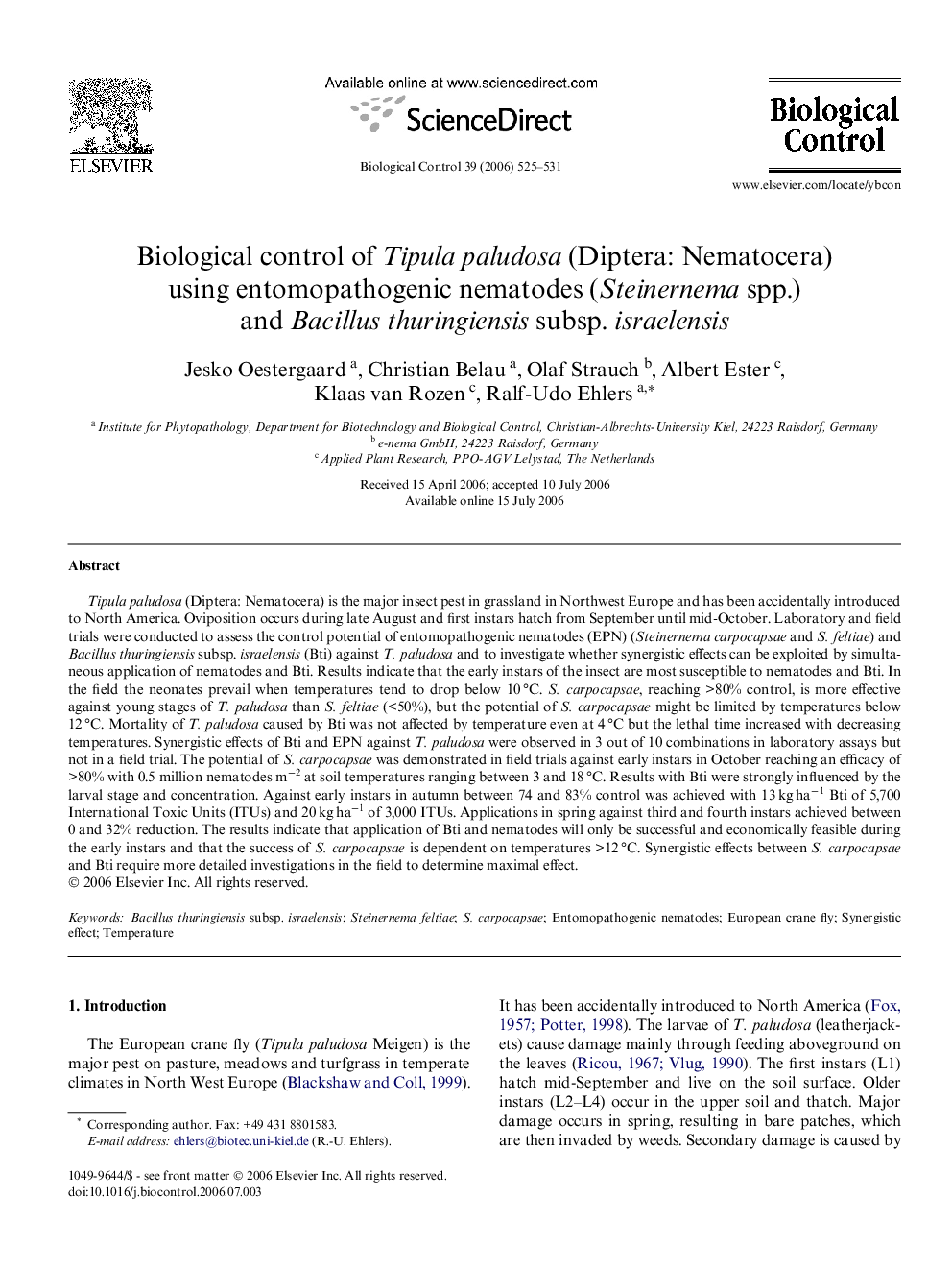| کد مقاله | کد نشریه | سال انتشار | مقاله انگلیسی | نسخه تمام متن |
|---|---|---|---|---|
| 4505403 | 1321142 | 2006 | 7 صفحه PDF | دانلود رایگان |

Tipula paludosa (Diptera: Nematocera) is the major insect pest in grassland in Northwest Europe and has been accidentally introduced to North America. Oviposition occurs during late August and first instars hatch from September until mid-October. Laboratory and field trials were conducted to assess the control potential of entomopathogenic nematodes (EPN) (Steinernema carpocapsae and S. feltiae) and Bacillus thuringiensis subsp. israelensis (Bti) against T. paludosa and to investigate whether synergistic effects can be exploited by simultaneous application of nematodes and Bti. Results indicate that the early instars of the insect are most susceptible to nematodes and Bti. In the field the neonates prevail when temperatures tend to drop below 10 °C. S. carpocapsae, reaching >80% control, is more effective against young stages of T. paludosa than S. feltiae (<50%), but the potential of S. carpocapsae might be limited by temperatures below 12 °C. Mortality of T. paludosa caused by Bti was not affected by temperature even at 4 °C but the lethal time increased with decreasing temperatures. Synergistic effects of Bti and EPN against T. paludosa were observed in 3 out of 10 combinations in laboratory assays but not in a field trial. The potential of S. carpocapsae was demonstrated in field trials against early instars in October reaching an efficacy of >80% with 0.5 million nematodes m−2 at soil temperatures ranging between 3 and 18 °C. Results with Bti were strongly influenced by the larval stage and concentration. Against early instars in autumn between 74 and 83% control was achieved with 13 kg ha−1 Bti of 5,700 International Toxic Units (ITUs) and 20 kg ha−1 of 3,000 ITUs. Applications in spring against third and fourth instars achieved between 0 and 32% reduction. The results indicate that application of Bti and nematodes will only be successful and economically feasible during the early instars and that the success of S. carpocapsae is dependent on temperatures >12 °C. Synergistic effects between S. carpocapsae and Bti require more detailed investigations in the field to determine maximal effect.
Journal: Biological Control - Volume 39, Issue 3, December 2006, Pages 525–531